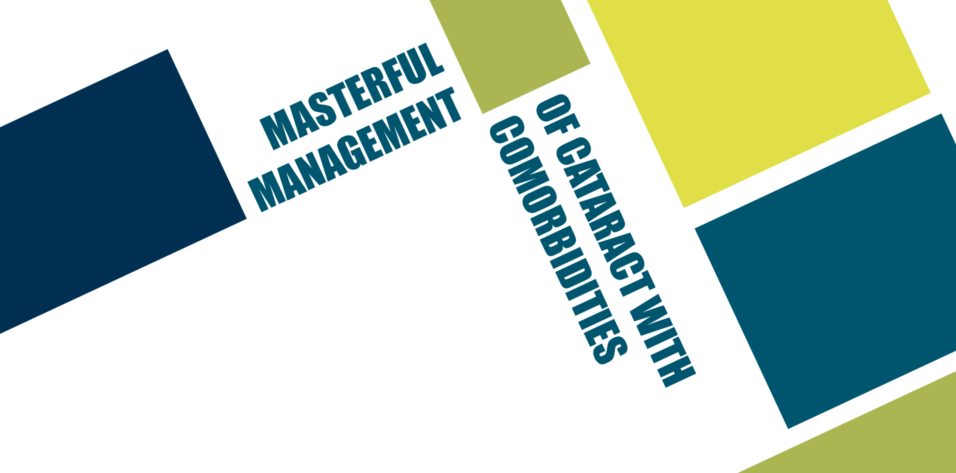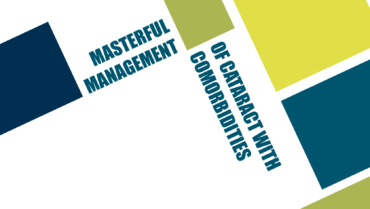
Cataract surgery can transform the life of someone who has begun to lose vision owing to lens opacification. Extreme refractive errors, however, such as high myopia, high hyperopia, and astigmatism (regular and irregular) pose a challenge that requires a high level of surgical expertise to address. Skill at assessing and managing these conditions is integral to delivering a successful refractive outcome.
PREOPERATIVE SKILLS
▶ No. 1: Perform a comprehensive assessment. This step is essential to determining the extent of the cataract, evaluating the cornea, and measuring the refractive error. The assessment should include corneal topography, wavefront analysis, and pachymetry. Advanced imaging such as OCT can help evaluate the structural integrity of the cornea and status of the retina. An ocular surface evaluation should also be part of the comprehensive assessment. Adequate treatment should be prescribed, if necessary, before the patient undergoes cataract surgery to optimize the ocular surface.
▶ No. 2: Plan refractive error correction. Use an advanced IOL formula and current technology to determine the most appropriate lens power and design for each patient. Adjustments may be necessary to account for an extremely long or short axial length. Intraoperative aberrometry can be helpful for confirming IOL power or position in real time, particularly if a toric lens is being implanted.
▶ No. 3: Educate and set expectations. It is imperative to discuss the potential limitations of and realistic goals for cataract surgery with patients who have extreme refractive errors. Ensure they understand that additional procedures and adjunctive treatment may be required after cataract surgery to achieve the desired visual outcome. Explain to individuals with dry eye disease that it is a chronic condition that can affect postoperative outcomes.
INTRAOPERATIVE SKILLS
▶ No. 1: Surgical technique. Attention to detail can minimize surprises and complications. Carefully execute corneal incisions (eg, longer track for hyperopic eyes) and the capsulotomy. Precisely center and align the IOL. A femtosecond laser may be used to enhance the accuracy of creating the corneal incisions and capsulotomy.
These considerations can be particularly important for patients who may be predisposed to weak zonules due to conditions such as pseudoexfoliation syndrome. If the cataract is dense and the risk of an errant capsular tear therefore greater, you may wish to use a capsulotomy-assistance device.
▶ No. 2: Adopt an individualized approach. Tailor your surgical approach to each patient’s specific needs and parameters. If a conventional IOL cannot fully correct the refractive error, consider placing a piggyback IOL. Alternatively, the patient may be a candidate for corneal refractive surgery after the cataract procedure.
POSTOPERATIVE SKILLS
▶ No. 1: Follow up regularly. Monitor patients after surgery to assess their visual outcomes and address residual refractive errors and complications promptly. Regularly evaluate their progress and make necessary adjustments to optimize their visual acuity.
▶ No. 2: Manage expectations. Patient satisfaction is tied to their education and expectations. Many individuals with extreme refractive errors have heard about the easy postoperative courses and amazing results of friends and family members with modest preoperative refractive errors. This can be highly discouraging for them. Maintain regular communication to address patient concerns, answer their questions, and manage their expectations. Talk with them about the availability of glasses and refractive surgery to address residual refractive errors.
PARTNERING WITH A REFRACTIVE SURGEON
For those with minimal experience managing extreme refractive errors or corneal refractive correction techniques, it is advisable to refer appropriate patients to surgeons who have the necessary skills and resources. Ophthalmologists who specialize in corneal refractive correction have extensive experience in managing extreme refractive errors and addressing associated corneal conditions. They are familiar with the latest techniques and technologies as well as how to manage unexpected outcomes. They also have access to advanced technologies such as topographers and femtosecond laser platforms.
A coordinated approach to care can lead to better outcomes and greater patient satisfaction.




